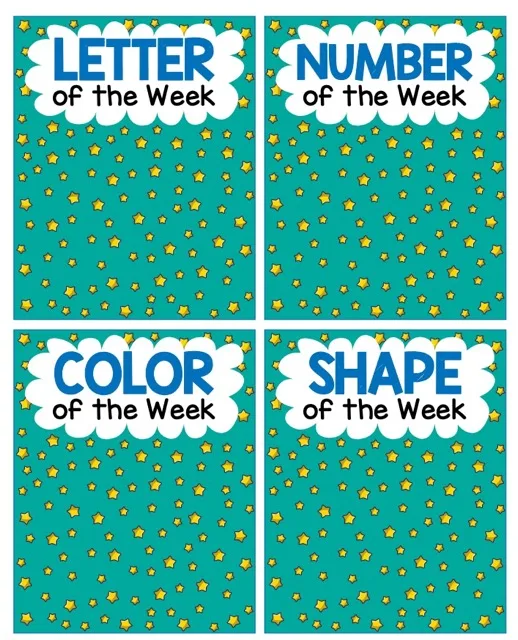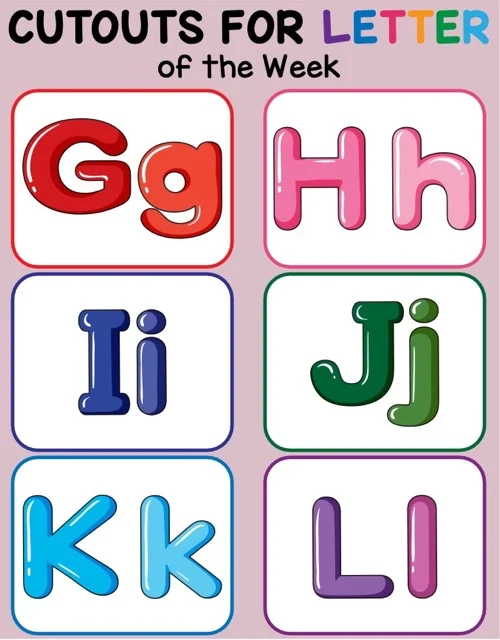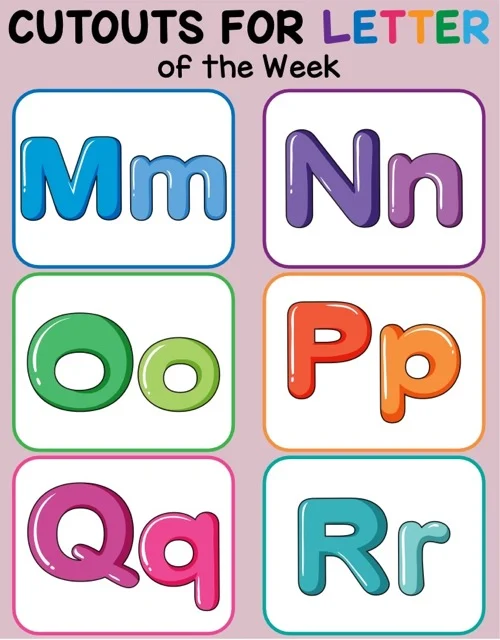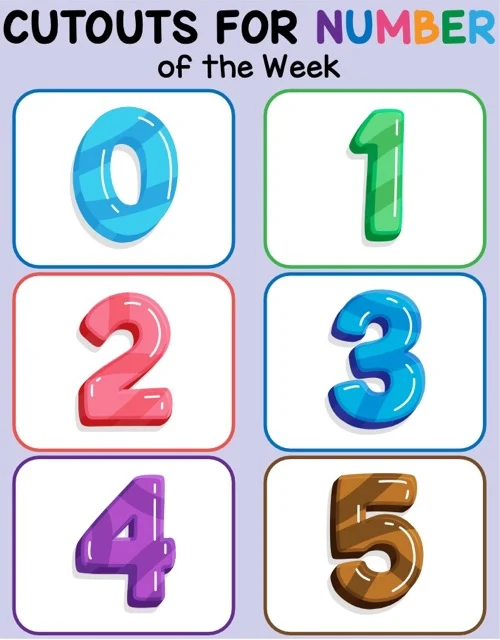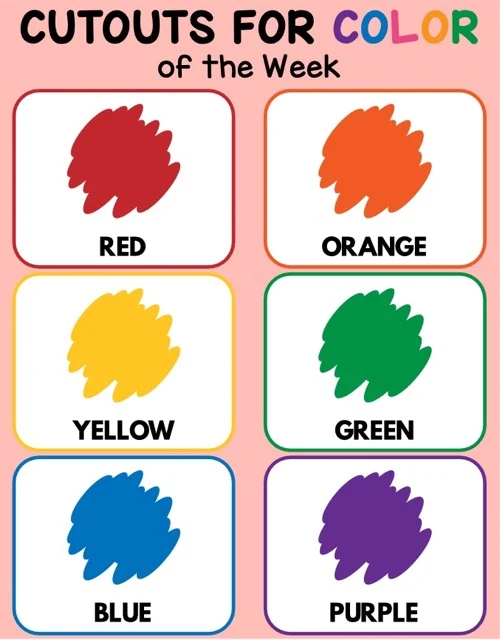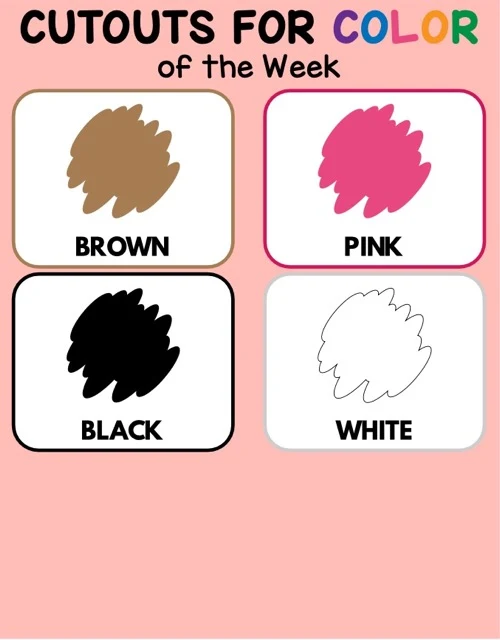Educational Cutouts: Play-Based Learning
Educational cutouts are a versatile teaching tool for early childhood education, promoting play-based learning and the development of fine motor skills, color and shape recognition, and literacy and numeracy skills. The cutouts' adaptability allows for differentiated instruction, catering to various age groups and abilities through activities like matching games, sorting, and sequencing. A current theme uses letters, numbers, and shapes, and the materials needed are readily accessible. The overall impact is a positive contribution to children's cognitive development, fostering problem-solving and creativity.
Educational Cutouts: A Comprehensive Guide
Briefing Document: Educational Cutouts
Introduction:
This briefing document reviews the main themes and important facts about educational cutouts based on three sources: "Educational Cutout Exploration: A Study Guide," "Educational Cutouts: Activities and FAQs," and "Testing Theme: This Week.pdf". These sources provide comprehensive information about the purpose, usage, and benefits of educational cutouts for young learners.
Key Themes:
●
Play-based learning: The educational cutouts promote play-based learning, aligning with early childhood education principles. "The cutouts aim to support educational play-based activities focused on letter and number recognition, color and shape identification, and the development of essential cognitive skills." (Study Guide, Short Answer Quiz Key)
●
Skill development: The cutouts support the development of a variety of skills, including:
○
Fine motor skills: "The process of cutting, manipulating, and arranging the cutouts directly engages and strengthens the small muscles in the hands, improving fine motor control." (Study Guide, Short Answer Quiz Key)
○
Color and shape recognition: "Matching colors and identifying different shapes enhances visual discrimination." (Activities and FAQs)
○
Letter and number recognition: "Associating letters and numbers with their corresponding cutouts supports early literacy and numeracy skills." (Activities and FAQs)
○
Sorting and classification: "Grouping cutouts by color, shape, letter, or number encourages logical thinking and categorization abilities." (Activities and FAQs)
●
Adaptability and Differentiation: The cutouts can be adapted for learners of different ages and abilities. "Simpler activities like color matching can be introduced to younger learners. Older learners can engage in spelling, creating equations, or other complex activities using the cutouts." (Study Guide, Short Answer Quiz Key) This adaptability allows for differentiated instruction, catering to individual learning styles and levels.
Important Facts and Activities:
●
This week's theme: "The theme for this week's cutouts is a combination of letters, numbers, colors, and shapes." (Study Guide, Short Answer Quiz Key) The "Testing Theme: This Week.pdf" document visually showcases the cutouts available, which include uppercase and lowercase letters, numbers 1-20, and basic shapes (square, circle, triangle, heart, star).
●
Suggested Activities:
○
Matching games: Create matching pairs based on various attributes.
○
Sorting activities: Group cutouts by color, shape, letter, or number.
○
Sequencing: Arrange letters or numbers in alphabetical or numerical order.
○
Art projects: Use cutouts for collage, decorating, or creating unique artwork.
○
Storytelling: Incorporate the cutouts as visual aids for characters and objects.
○
Additional Activities:
* Creating patterns and sequences with the shapes.
* Building 3D creations using the cutouts as blocks.
* Utilizing them as stencils for drawing or painting.
●
Materials: The necessary materials include printed cutout sheets, scissors, and optional laminating sheets and a laminator for durability.
Impact on Cognitive Development:
The use of educational cutouts has a positive impact on a child's overall cognitive development. Engaging with the cutouts fosters essential skills such as problem-solving, critical thinking, and creativity. Activities like sorting and sequencing contribute to logical thinking and organizational skills. The manipulation of the cutouts also develops hand-eye coordination and spatial reasoning.
Conclusion:
Educational cutouts are a valuable tool for enhancing learning experiences in early childhood education. They effectively combine play-based activities with the development of essential cognitive and motor skills. The adaptability of the cutouts ensures their relevance for learners of different ages and abilities, making them a versatile resource for promoting
Educational Cutouts: Activities and FAQs
FAQs about This Week's Theme
1. What is the purpose of these cutouts?
The cutouts are designed to be used for educational and play-based activities that focus on letters, numbers, colors, and shapes.
2. What age group are these cutouts suitable for?
The cutouts can be used for a wide range of ages, depending on the specific activity. Younger children may benefit from focusing on colors and shapes, while older children can engage with letter and number recognition.
3. What skills can children develop using these cutouts?
Children can develop various skills using these cutouts, including:
●
Fine Motor Skills: Cutting out and manipulating the shapes helps improve fine motor control.
●
Color and Shape Recognition: Matching colors and identifying different shapes enhances visual discrimination.
●
Letter and Number Recognition: Associating letters and numbers with their corresponding cutouts supports early literacy and numeracy skills.
●
Sorting and Classification: Grouping cutouts by color, shape, letter, or number encourages logical thinking and categorization abilities.
4. What are some specific activities that can be done with these cutouts?
Here are a few examples of activities:
●
Matching Games: Create matching pairs by color, shape, letter, or number.
●
Sorting Activities: Sort the cutouts into different categories based on their attributes.
●
Sequencing: Arrange letters or numbers in alphabetical or numerical order.
●
Art Projects: Use the cutouts for collage, decorating, or creating unique artwork.
●
Storytelling: Incorporate the cutouts into storytelling activities, assigning characters or objects to different shapes and colors.
5. Are the cutouts reusable?
Yes, the cutouts are designed to be reusable. Laminate them for added durability and easy cleaning.
6. What materials are needed to use the cutouts?
You will need:
●
The printed cutout sheet
●
Scissors
●
Optional: Laminating sheets and a laminator
7. Can these cutouts be adapted for different learning levels?
Yes, the cutouts can be adapted for different learning levels. For younger learners, focus on simpler activities like color matching. For older learners, introduce more complex concepts like spelling words or creating equations with the number cutouts.
8. Where can I find more ideas for using these cutouts?
Search online for "educational activities with shapes and colors," "letter recognition activities," or "number learning games." You can also find inspiration from early childhood education websites and blogs.
Educational Cutout Exploration: A Study Guide
Educational Cutout Exploration: A Study Guide
Short-Answer Quiz
Instructions: Answer the following questions in 2-3 sentences.
1.
What are the primary educational purposes of the cutouts?
2.
How do the cutouts support the development of fine motor skills?
3.
List three distinct skills, besides fine motor skills, that children can develop using the cutouts.
4.
Explain how the cutouts can be incorporated into storytelling activities.
5.
Describe how the cutouts can be adapted for learners of different ages and abilities.
6.
What is the benefit of laminating the cutouts?
7.
Besides scissors, what other material might be helpful when using the cutouts?
8.
Looking at "Testing Theme: This Week.pdf," what is the theme of this week's cutouts?
9.
Identify three different sorting activities that could be done with the cutouts featured in "Testing Theme: This Week.pdf."
10.
Beyond the provided examples, suggest two additional creative activities that could be done using the cutouts.
Short-Answer Quiz Answer Key
1.
The cutouts aim to support educational play-based activities focused on letter and number recognition, color and shape identification, and the development of essential cognitive skills.
2.
The process of cutting, manipulating, and arranging the cutouts directly engages and strengthens the small muscles in the hands, improving fine motor control.
3.
Children can develop color and shape recognition, letter and number recognition, and sorting and classification abilities.
4.
Children can assign characters or objects to different shapes and colors, using the cutouts as visual aids during storytelling. This can enhance imagination and narrative development.
5.
Simpler activities like color matching can be introduced to younger learners. Older learners can engage in spelling, creating equations, or other complex activities using the cutouts.
6.
Laminating the cutouts increases their durability, making them reusable and easy to clean, extending their lifespan for multiple activities.
7.
Laminating sheets and a laminator would be helpful for enhancing the cutouts' durability.
8.
The theme for this week's cutouts is a combination of letters, numbers, colors, and shapes.
9.
Possible sorting activities include sorting by color (grouping all reds, blues, etc.), sorting by shape (all squares, circles, etc.), and sorting by letter or number (alphabetical or numerical order).
10.
Additional activities could include creating patterns and sequences with the shapes, using the cutouts as building blocks for 3D creations, or using them as stencils for drawing or painting.
Essay Questions
1.
Discuss the importance of play-based learning in early childhood education, specifically addressing how the use of educational cutouts aligns with this approach.
2.
Analyze how the educational cutouts can be utilized to foster both individual and collaborative learning experiences for children.
3.
Explain how the cutouts support differentiated instruction by allowing for adaptations to suit different learning styles and levels. Provide specific examples.
4.
Evaluate the potential impact of using these educational cutouts on a child's overall cognitive development, referencing specific skills and areas of improvement.
5.
Design a comprehensive lesson plan for a specific age group using the educational cutouts, outlining clear learning objectives, detailed activity instructions, and methods for assessing learning outcomes.
Glossary of Key Terms
●
Fine Motor Skills: The ability to make movements using the small muscles in our hands and wrists.
●
Color and Shape Recognition: The ability to identify and differentiate between various colors and shapes.
●
Letter and Number Recognition: The ability to identify and name letters and numbers.
●
Sorting and Classification: The ability to group items based on shared characteristics or attributes.
●
Sequencing: The ability to arrange items in a specific order, such as alphabetical or numerical order.
●
Laminate: To cover with a thin protective layer of plastic to increase durability and longevity.
●
Adapt: To modify or adjust for different needs or situations.
●
Learning Levels: Different stages of cognitive and academic development in learners.
●
Play-Based Learning: An educational approach where play is used as a primary means of learning and exploration.
●
Differentiated Instruction: Teaching methods and strategies adapted to meet the individual needs of diverse learners.
